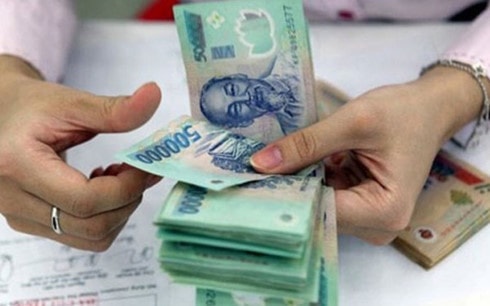From January 1, 2018, change in salary calculation for retirees
Vietnam Social Security said that from January 1, 2018, it will change the way pension percentages are calculated.
At the recent conference on providing information on social insurance and health insurance in July 2017, a representative of Vietnam Social Insurance (VSS) said that based on the provisions of the 2014 Social Insurance Law, the way to calculate the pension percentage will change from January 1, 2018.
 |
| From January 1, 2018, the way pension rates are calculated will change. Illustration photo |
Accordingly, from January 1, 2018, the salary used as the basis for compulsory social insurance contributions is still the salary according to the scale, level, military rank (coefficient) and position allowances (coefficient), seniority allowance exceeding the framework (%), seniority allowance (if any) (%) based on the basic salary level prescribed by the State from time to time. However, according to the provisions of Clause 2, Article 56 of the Social Insurance Law 2014, from January 1, 2018, the roadmap for changing the calculation of pension percentage will begin to be applied.
Specifically, male workers are calculated at 45% of the average monthly salary or monthly income for social insurance contributions when they have paid social insurance for 16 years and retired in 2018, 17 years and retired in 2019, 18 years and retired in 2020, 19 years and retired in 2021, 20 years and retired from 2022 onwards.
Female workers retiring from 2018 onwards with 15 years of social insurance contributions will be calculated at 45% of the average monthly salary for social insurance contributions.(This content changes for male workers because before 2018, male workers only needed to pay social insurance for 15 years to be calculated at 45%). After that, for each additional year of social insurance payment, workers (both male and female) will be calculated an additional 2%; the maximum level is 75%.
According to Mr. Nguyen Duc Toan, Deputy Director of the Vietnam Social Security Communication Center, this content only changes for female workers, because previously, for each additional year of social insurance contributions after reaching the rate of 45%, female workers were calculated an additional 3%.
Thus, female workers who are 55 years old and retire from 2018 onwards must have 30 years of social insurance contributions to receive the maximum 75%.(Compared to before 2018, only 25 years of social insurance contributions were required to enjoy the maximum rate of 75%);Male workers retiring in 2018 must have paid social insurance for 31 years, those retiring in 2019 must have paid 32 years, those retiring in 2020 must have paid 33 years, those retiring in 2021 must have paid 34 years, and those retiring from 2022 onwards must have paid 35 years of social insurance to enjoy the maximum rate of 75% (compared to before 2018, only 30 years of social insurance were required to enjoy the maximum rate of 75%).
Vietnam Social Security said the new pension calculation method will affect male workers who have not yet retired.achieve the number of years required to reach the maximum benefit rate of 75% and affect the lump sum benefit amount at retirement.
Changing the way pensions are calculated without a roadmap will affect female workers more, especially female workers with less than 30 years of social insurance contributions; the fewer years of social insurance contributions, the greater the impact.
According to statistics from Vietnam Social Security, about 68% of retirees receive a one-time pension upon retirement. Thus, this calculation affects more than 32% of retirees (mostly early retirees).
Also according to statistics, the average time of social insurance contribution of retirees in the past 4 years is over 32 years for male workers, and 29 years for female workers. Thus, the overall impact is not large.
Vietnam Social Security believes that the pension level depends on many factors such as: age, social insurance payment period, social insurance payment salary, working conditions... The pension rate will be low when retiring early and even lower if the social insurance payment period is not long. Therefore, when the employee is young, healthy, and has a good job, he/she should continue to pay social insurance until retirement age to receive the best pension level to help ensure a better life when retired./.
According to VOV
| RELATED NEWS |
|---|


